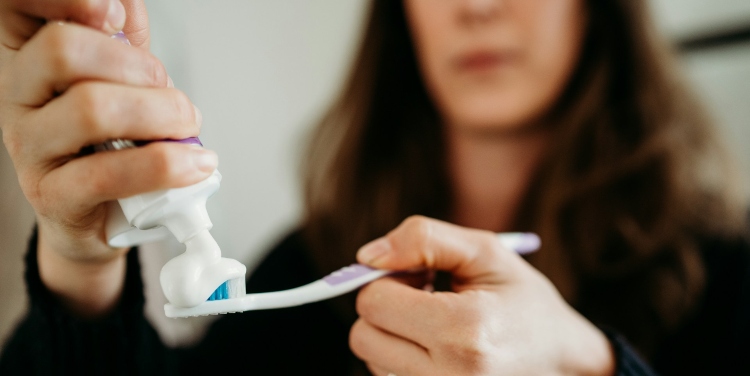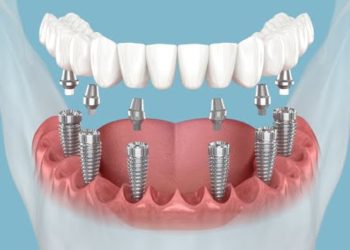Brushing twice a day. Flossing once in the evenings. Rinsing with mouthwash between meals.
Not only does following a proper at-home oral hygiene routine protect your teeth from cavities, freshen your breath, and keep them looking pearly white, but it also removes plaque and protects your gums from harmful oral bacteria.
All it takes is skipping this routine once or twice for these bacteria to do their damage.
You might notice some early signs of gum disease – such as gum inflammation – within just a few days of neglecting your oral hygiene, with these signs becoming much harder to ignore after a few weeks.
In these early stages, your oral health can be fully restored by following an adequate routine and professional deep cleaning.
But what role does deep cleaning play in periodontal disease treatment?
Keep reading to learn more.
How quickly does gum disease develop?
Gum disease is one of the leading oral health problems here in the UK, with more than half of adults having suffered from it to some degree.
Many people don’t realise how quickly it can develop, and all it takes is a few days of neglecting your oral hygiene routine for it to happen.
Gingivitis, the initial stage of periodontal disease, begins with plaque accumulating around the teeth and gums, and the formation of hard plaque and tartar.
This can happen in as little as four days of not brushing or flossing. On the fifth day, you may start to notice some of the tell-tale signs of gum disease, such as red swollen gums and bleeding when brushing.
If left untreated, gingivitis can develop into more advanced stages of periodontitis in just a few weeks, causing swollen tender gums, painful chewing, loose teeth, bad breath, and many more unpleasant symptoms.
How do deep cleaning treatments help to reverse gum disease?
The earlier you seek treatment for gum disease, the better your chances of fully restoring your oral health.
As well as improving your at-home teeth-cleaning routine, you should also be visiting the dentist regularly (at least every 3-6 months) for professional cleanings, to remove plaque that can’t be removed with your toothbrush.
There are a few different methods your dentist will use to treat your gum disease, including:
Scaling and polishing
To help remove stubborn plaque on the surface of the teeth and around the gumline, your dentist will perform a scale and polish procedure.
After scraping away the bulk of hardened bacteria and minerals that have formed on and around the teeth, your dental hygienist will then shatter what’s remaining with a special sonic dental tool, before polishing the teeth and gums with a high-speed brush.
By having this done every few months, you’ll be able to effectively manage your gum disease or even reverse it altogether!
Root planing
For more advanced bacterial build-ups, your dentist may need to go below the gum line to make sure everything is clean.
They’ll do this with a root planing procedure, during which they’ll push back the gum tissue to expose the tooth roots and use the same tools to chip away tartar from the roots.
This is a much more invasive procedure used to manage more advanced forms of gum disease, so a local anaesthetic may be used to ensure you’re comfortable.
What else can I do to reverse gum disease?
If you’re still in the early stages of gum disease, don’t worry!
There are plenty of changes you can make at home – alongside seeking dental advice – that can help to restore your oral health.
These changes can include:
- Get back on top of your oral hygiene routine
Keeping your teeth and gums clean is the best way to keep gum disease at bay.
Make sure you’re brushing at least twice a day, preferably with an electric toothbrush and high-fluoride toothpaste.
You should also floss at least once a day at night time to remove food particles stuck between your teeth, and consider using mouthwash between meals to loosen any leftover debris.
- Quit smoking or chewing tobacco
It’s no secret that tobacco is bad for your oral and overall health. Quitting can be good for you in many ways, but when it comes to your oral health, it will reduce gum inflammation and your risk of developing advanced gum disease and mouth cancer.
- Improve your diet
By making small changes to your diet – like cutting down on sugary foods and drinks, and incorporating vitamin and mineral-rich foods – you can reduce inflammation and promote healthy gums.
Get advice from a holistic dentist!
Gum disease is nothing to be embarrassed about, and with the correct treatment and early diagnosis, your chances of reversing it completely are greatly increased.
With the help of a holistic dentist, you can achieve optimum oral, physical, and emotional health, and stop gum disease in its tracks.
Don’t suffer with your oral health in silence – get in touch with an expert dentist in your area today to find out more about the available treatments that can help!
David Prior
David Prior is the editor of Today News, responsible for the overall editorial strategy. He is an NCTJ-qualified journalist with over 20 years’ experience, and is also editor of the award-winning hyperlocal news title Altrincham Today. His LinkedIn profile is here.











































































